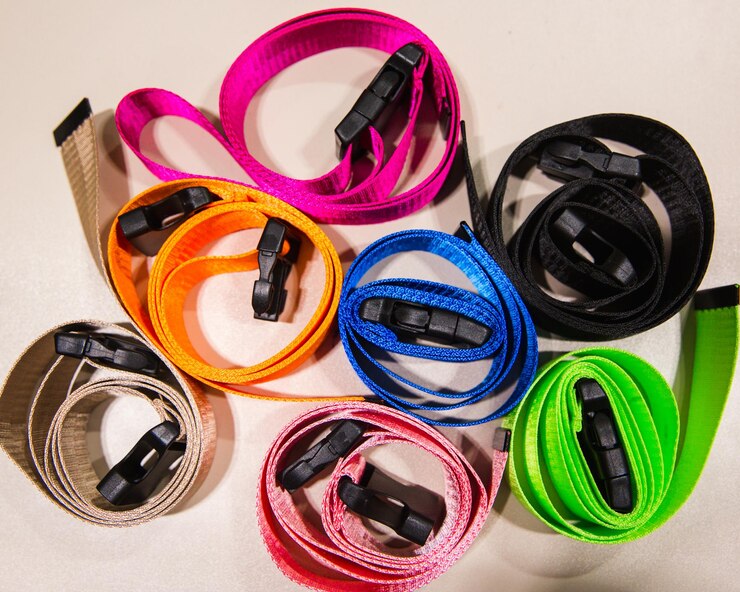
In the world of sports and fitness, finding effective ways to prevent injuries and enhance performance is paramount. Among the myriad solutions available, KT Sports Tape has emerged as a game-changer. Whether you’re a professional athlete or someone recovering from an injury, this innovative athletic tape offers a unique approach to support and stability. In this blog post, we’ll explore everything you need to know about KT Tape, from its origins to practical tips on how to use it. Let’s get started!
KT Sports Tape, also known simply as KT Tape, was introduced to the world of sports medicine in the early 21st century. Initially designed by Dr. Kenzo Kase in the 1970s, the concept of using adhesive tape to support muscles and joints gained popularity among athletes and fitness enthusiasts in the 2000s. Unlike traditional athletic taping methods, KT Tape is elastic and can stretch up to 140% of its original length, mimicking the skin’s natural elasticity.
Its primary uses include injury prevention, pain relief, and enhanced athletic performance. Athletes across various disciplines, from running to swimming, have embraced KT Tape for its versatility and effectiveness. The tape’s ability to provide support without restricting movement has made it a favorite among those seeking a balance between stability and flexibility.
Understanding how KT Tape works physiologically is essential to appreciating its benefits. The tape is designed to lift the skin slightly, creating space between the skin and the underlying tissues. This space helps improve blood flow and lymphatic drainage, reducing inflammation and promoting faster recovery.
When applied correctly, KT Tape can support muscles and joints, helping to reduce fatigue and prevent overuse injuries. The tape’s elasticity allows for a full range of motion while providing the necessary support to stabilize the affected area. This combination of support and flexibility is what sets KT Tape apart from traditional rigid athletic taping methods.
Research has shown that KT Tape can positively affect proprioception—the body’s ability to sense its position and movement. By enhancing proprioception, the tape helps athletes maintain better control and coordination during physical activities, reducing the risk of injuries.
KT Tape’s versatility makes it suitable for a wide range of users. Professional athletes often use it to enhance performance and prevent injuries during competitions and training sessions. Fitness enthusiasts, such as runners, cyclists, and swimmers, also benefit from the added support and pain relief the tape provides.
Additionally, individuals recovering from injuries or surgeries can use KT Tape to aid in the rehabilitation process. The tape’s ability to reduce swelling and improve circulation helps accelerate healing, allowing for a quicker return to physical activities.
Even those with chronic conditions, such as arthritis or tendinitis, can experience relief with the proper application of KT Tape. Its non-restrictive nature makes it ideal for supporting joints and muscles without limiting daily activities.
Applying KT Tape correctly is crucial to maximizing its benefits. Here, we’ll provide a step-by-step guide for some common applications:
When it comes to choosing between KT Tape and traditional athletic taping methods, several factors come into play. Traditional athletic tape is rigid and provides strong support by immobilizing the affected area. It’s commonly used for acute injuries, such as sprains, where stability is crucial.
On the other hand, KT Tape offers a more flexible and comfortable alternative. Its elasticity allows for a full range of motion while still providing the necessary support. This makes KT Tape ideal for overuse injuries, chronic conditions, and situations where maintaining mobility is essential.
Another advantage of KT Tape is its ease of application. Unlike traditional taping, which often requires professional assistance, KT Tape can be applied by individuals themselves with minimal training. The tape’s adhesive properties also make it more durable, often lasting several days even with exposure to sweat and water.
 Testimonials and Reviews
Testimonials and ReviewsReal-life experiences from athletes and users highlight the effectiveness of KT Tape. Here are a few testimonials:
Q: How long can I wear KT Tape?
A: KT Tape is designed to last several days, even with exposure to sweat and water. However, it’s recommended to reapply the tape every 3-5 days for optimal effectiveness.
Q: Can I use KT Tape if I have sensitive skin?
A: Yes, KT Tape is hypoallergenic and latex-free, making it suitable for individuals with sensitive skin. However, it’s always a good idea to test a small patch of skin before applying the tape more broadly.
Q: Can I exercise with KT Tape on?
A: Absolutely! KT Tape is designed to stay in place during physical activities. Its adhesive properties ensure it remains effective even during intense workouts.
Q: How do I remove KT Tape without causing irritation?
A: To remove KT Tape, gently peel it off while holding the skin taut. Applying baby oil or warm water can help loosen the adhesive and make removal more comfortable.
Q: Is KT Tape waterproof?
A: Yes, KT Tape is water-resistant and can withstand exposure to sweat and water. This makes it suitable for activities like swimming and running.
In conclusion, KT Sports Tape is a versatile and effective solution for athletes and fitness enthusiasts seeking support, injury prevention, and enhanced performance. Its unique elasticity and adhesive properties set it apart from traditional taping methods, offering a balance of stability and flexibility.
Whether you’re a professional athlete or someone recovering from an injury, KT Tape can make a significant difference in your physical activities. Don’t just take our word for it—try it for yourself and experience the benefits firsthand.
It is a long established fact that a reader will be distracted by the readable content of a page when looking at its layout. The point of using Lorem Ipsum is that it has a more-or-less normal distribution
contact us : laynmade5@gmail.com